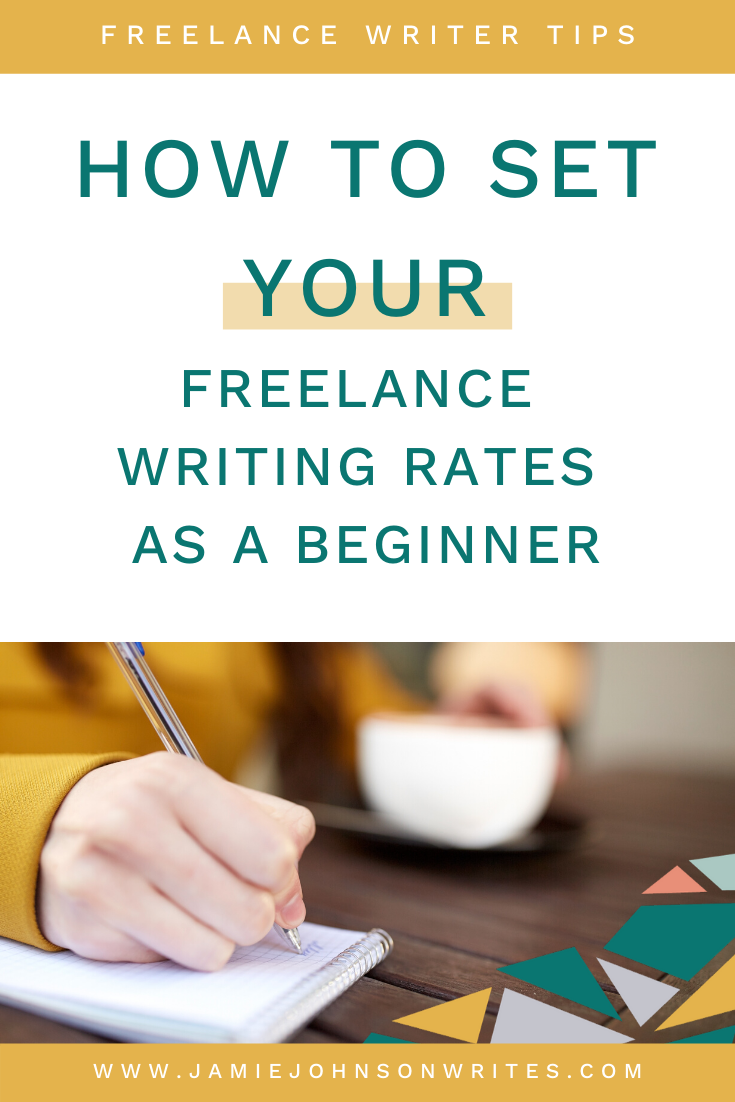How to Set Your Freelance Writing Rates as a Beginner
When I first started freelance writing in 2016, I was willing to take any job that came my way. My very first client hired me to write five 750-word product reviews for a whopping $40.
And that’s $40 total, not per review. Whomp, whomp, whomp.
I can look back and laugh at how absurdly low that rate is now, but it’s tough when you’re a new freelancer and not making any money.
You have no confidence, and you’re not even sure if you can make this freelancing thing work. So...something is better than nothing, right?
Well, yes and no. I believe it’s okay to start small and do a few low-paying gigs as a way to establish yourself. But if you want to make real money, then at some point you’re going to get over your fear and start charging more.
The key is knowing when and how to do this. And that’s exactly what this blog post is going to dive into.
The Different Pricing Models
Before we get into how to set your rates, it’s helpful to understand the different pricing models. There are pros and cons to each, and the pricing model you use really depends on the type of writing job you’re doing.
Hourly
With hourly pricing, you’re paid based on how long it takes you to write the article from start to finish. Many freelancers are more comfortable with this pricing model because it’s what they’re used to in a traditional job.
And hourly pricing isn’t always a bad idea, especially if you’re not sure how long something will take you in the beginning. But you will lose money by sticking to an hourly rate for too long.
Let’s say you charge $50 an hour, and in the beginning, it takes you three hours to write an article for a client. Not bad, huh?
But as you keep writing for that same client, you’ll become faster and more efficient. Over time, it may only take you an hour and a half to write that same blog post.
Now you’re making $75 for the exact same blog post. Personally, I think I should make more money for being faster and more efficient, which is why I always prefer to charge per word or per project.
Per word
With a per-word pricing model, you’re paid a set rate for each word you write. For instance, if I charge 20 cents per word then I’ll be paid $200 for a 1,000-word blog post.
In my experience, per-word pricing is more common for bigger companies with large content marketing teams. Many of my clients pay me on a per-word basis, and I’ve never had any issues with this arrangement.
Per project
If you’re not interested in haggling over word counts, then you can charge on a per-project basis. For instance, instead of charging 20 per word, you could just charge a flat rate per article.
Let’s say you want to make at least $50 an hour and you know that it usually takes you about three hours to finish a 1,000-word blog post. Then you could just charge a flat fee of $150 for that blog post.
This ensures that you’re getting paid your desired hourly rate, but you’re not penalized for writing the article in less than three hours. But keep in mind that the reserve is also true.
If you get a client who’s super picky or asks for lots of edits, then it may occasionally take you more than three hours to write that same blog post. But I find that per-project pricing usually works out better in the long run.
How to Set Your Freelance Writing Rates
Everyone wants to know what’s a “standard” rate for freelance writers, and I always struggle with what to tell them. I know some freelancers who are paid as much as $1,500 per article, and others that charge 10 cents per word.
The truth is the type of rates you’re able to command really depends on the type of writing you’re doing and your experience. Here are a few things you can consider when setting your freelance writing rates:
1. How much experience do you have?
You can’t expect to be paid $300 per blog post if you’ve never had a single freelance writing client in your life. Sounds obvious, but it bears repeating because so many freelancers expect to be making big money right out of the gate.
If you’re brand new then I recommend having very low expectations for those first few writing jobs. Look at this as an opportunity to build your confidence and prove that there is a demand for your writing services.
Once you have a few happy clients and you have some freelance writing samples, then you can think about charging more.
2. The type of writing you want to do
Not all freelance writing work is created equal. For instance, writing product reviews tends to be pretty easy, so you’re not going to get paid as much money.
Whereas clients that want long-form, SEO-optimized articles will be willing to pay a lot more. White papers, technical writing, and copywriting all tend to pay more money as well.
3. The type of niche you have (or don’t have)
I’ve made it pretty clear that I don’t think freelance writers have to choose a freelance writing niche immediately. I think it’s completely fine to be a generalist while you figure out what you enjoy writing about.
However, you’re not going to be able to command high rates like someone with a niche. Niching down is a good way to narrow your focus and stand out to potential clients.
Plus, some niches pay higher than others. For instance, technology and finance tend to come with higher budgets, whereas you’ll probably earn less as a travel writer.
4. What is your income goal?
And finally, you need to consider how much money you’re trying to earn every month. Really sit down, do the math, and figure out how many articles you’ll have to write at your current rate to hit your monthly income goal.
My first income goal was to earn $1,000 per month, and this is what caused me to stop accepting $10 blog posts and raise my rates. Because who wants to write 100 blog posts per month?
If you need help setting income goals, this is something I cover much more in-depth in my freelance writing course.
Bottom Line About Rates
The final point I want to make about your freelance writing rates is not to be discouraged if your first couple of jobs don’t pay very much. You took that first step and found some initial work, so be proud of yourself for that.
Freelance writing isn’t like a 9-5 job where you hope for a 3% raise once a year. You’d be surprised how quickly you can make progress and start earning more money.
But what if you’ve been at this for a while and you’re still not earning the kind of money you want to earn? Well, I recommend scheduling a free, 30-minute coaching call with me.
During this call, we’ll discuss any problems you’re having and talk about opportunities for how you can work with me. I only do a few of these each week, so make sure to grab your spot soon.
SIGN UP FOR YOUR FIRST STEPS COACHING CALL




